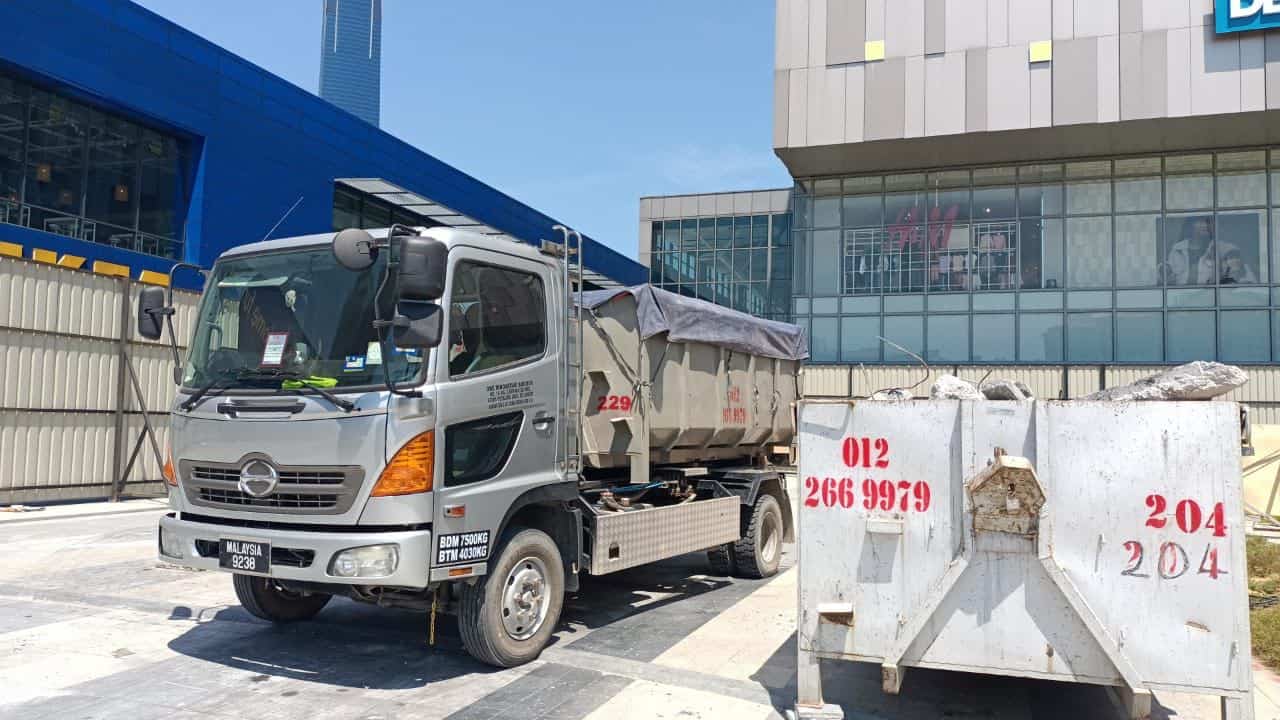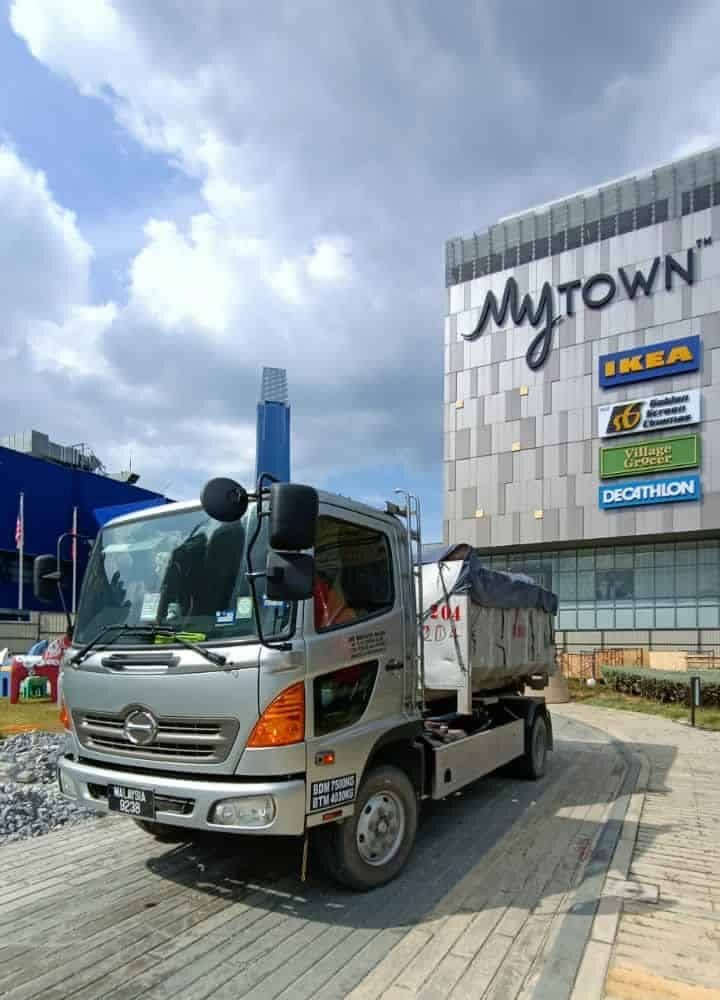RORO BIN RENTAL
Find The Right Size For Your Project

Small Roro Bin
Dimensions: 12′ (L) X 6′ (W) X 2.5′ (H)
Best Use: Heavy construction and demolition waste like concrete and soil.

Large Roro Bin
Dimensions: 12′ (L) X 6′ (W) X 4′ (H)
Best Use: Light-weight construction, industrial, commercial waste, furniture, household bulky waste, trees and etc.

Domestic Roro Bin
Dimensions: 12′ (L) X 6′ (W) X 4′ (H) with roof
Best Use: Domestic food waste (Organic waste).

Extra Giant Roro Bin
Dimensions: 16′ (L) X 8′ (W) X 6′ (H)
Best Use: Light-weight construction, industrial, commercial waste, furniture, household bulky waste, trees and etc.

Giant Roro Bin
Dimensions: 14′ (L) X 7′ (W) X 5.5′ (H)
Best Use: Light-weight construction, industrial, commercial waste, furniture, household bulky waste, trees and etc.
WHAT MAKES US DIFFERENT ?

Value Price

Express Service

Licensed Under Local Authorities

Quick Scheduling
TESTIMONIALS
OUR CLIENTS







PROJECT REFERENCE









RORO Truck
Transporting vehicles across long distances requires specialized equipment. One standout option in logistics is the RORO truck, which simplifies the transport process with its unique roll-on/roll-off design. In this article, we’ll delve into everything you need to know about RORO trucks—from how they work to the industries that rely on them.
What is a RORO Truck?
RORO, or Roll-On/Roll-Off, trucks are specialized vehicles designed to carry cars, heavy machinery, and other large equipment by allowing them to be driven directly onto and off the truck bed. This convenient design makes loading and unloading vehicles faster and safer, revolutionizing how goods are transported, particularly in the automotive and heavy equipment industries.
Origin and Evolution of RORO Trucks
The concept of RORO shipping emerged in the early 20th century, with a rapid evolution during the 1950s and 60s as the demand for efficient vehicle transport grew. Over the decades, RORO trucks have evolved to become faster, safer, and more reliable, equipped with hydraulic lifts, securing mechanisms, and eco-friendly technology.
How RORO Trucks Work
The core idea behind RORO trucks is simple: vehicles or equipment roll onto the truck and roll off at the destination. This roll-on/roll-off mechanism eliminates the need for cranes or other loading equipment. RORO trucks usually have ramps and hydraulic lift systems, making it easy for operators to drive cargo directly onto the truck bed.
Types of Vehicles Transported by RORO Trucks
RORO trucks are incredibly versatile. They’re typically used to transport:
- Personal and commercial vehicles
- Heavy machinery for construction
- Agricultural equipment
- Military vehicles
- Large, immobile items that are difficult to transport by other means
Types of RORO Trucks
Heavy-Duty RORO Trucks
Heavy-duty RORO trucks are built to transport large vehicles or machinery, especially for industrial and construction purposes. These trucks feature reinforced ramps and secure harnesses to ensure stability.
Standard RORO Trucks
Standard RORO trucks are more compact, primarily used for transporting standard vehicles like cars and small trucks over medium to long distances.
Custom-Built RORO Trucks for Specific Industries
Certain industries, such as aviation and defense, may require specialized RORO trucks designed to handle oversized or sensitive cargo. Custom-built RORO trucks provide solutions for unique transport needs, allowing for specialized securing mechanisms and heightened safety measures.
Advantages of Using RORO Trucks
Efficiency in Vehicle Transport
With the roll-on/roll-off capability, RORO trucks drastically reduce loading and unloading times, making transport quicker and more efficient.
Cost Savings in Logistics
RORO transport can be more cost-effective, as it eliminates the need for complex equipment and additional manpower, leading to lower operational costs.
Environmentally Friendly Aspects
RORO trucks contribute to greener logistics, thanks to shorter loading times and less idle engine time. Many newer RORO trucks are also being designed with fuel efficiency in mind, reducing overall emissions.
Challenges Faced by RORO Trucks
Limitations in Cargo Types
RORO trucks are excellent for transporting vehicles but less suitable for irregularly shaped or fragile items, limiting their use in some sectors.
Weather and Terrain Challenges
RORO trucks face limitations when it comes to navigating harsh weather or difficult terrains, which can compromise safety and delay delivery times.
Maintenance and Durability Issues
Due to their heavy use, RORO trucks often require regular maintenance to keep them in optimal condition, which can be costly for logistics companies.
Applications of RORO Trucks in Different Industries
Automobile Industry
RORO trucks are essential in the automobile industry for transporting vehicles from manufacturers to dealerships or shipping ports.
Construction and Heavy Machinery
In construction, RORO trucks are used to move heavy machinery like excavators and bulldozers, crucial for large-scale projects.
Agricultural Equipment Transport
Farm equipment like tractors and harvesters is transported efficiently by RORO trucks, reducing downtime for farmers and agricultural businesses.
How RORO Trucks Benefit the Global Shipping Industry
Efficient Loading and Unloading Process
The RORO system allows vehicles to be loaded and unloaded quickly, reducing wait times at ports and improving overall efficiency in global logistics.
Reduced Shipping Costs
By minimizing the need for additional handling equipment and reducing labor costs, RORO trucks help keep shipping costs down.
Enhanced Safety in Transporting Vehicles
Vehicles remain secure during transport, significantly lowering the risk of damage, which is especially important in high-value cargo.
Key Components and Features of RORO Trucks
Hydraulic Lift Systems
Hydraulic lifts help adjust the truck bed’s height, enabling vehicles to roll on smoothly, regardless of the height of the loading platform.
Securing and Fastening Mechanisms
Advanced securing systems ensure vehicles are stable during transport, critical for minimizing movement and avoiding damage.
Safety Features for Cargo and Operators
Modern RORO trucks come with advanced safety features, including load monitoring systems and reinforced securing mechanisms to protect both the cargo and operators.
Environmental Impact of RORO Trucks
Fuel Efficiency and Reduced Emissions
Modern RORO trucks focus on fuel efficiency, and by reducing idle times, they contribute to lower emissions compared to conventional transport trucks.
Eco-Friendly Alternatives in the RORO Industry
Some companies are investing in electric and hybrid RORO trucks, which promise a greener future for the logistics industry.
Innovations in RORO Truck Technology
Advanced Navigation Systems
GPS tracking and real-time navigation technology are becoming common in RORO trucks, helping improve delivery accuracy and efficiency.
Automated Loading and Unloading Technology
Automation reduces the need for manual operation, speeding up processes and reducing the risk of errors in vehicle loading/unloading.
Electric and Hybrid RORO Trucks
Electric RORO trucks are a promising development in the industry, offering a more sustainable way to transport large equipment over long distances.
How to Choose the Right RORO Truck for Your Needs
Consider the Type of Cargo
Assess the cargo’s size, weight, and specific requirements to ensure the chosen RORO truck can handle it safely.
Assess the Distance and Route Requirements
For long hauls, a sturdy, high-capacity RORO truck with efficient fuel usage is essential.
Evaluate the Cost and Budget Factors
Cost considerations are essential, as RORO trucks vary in price depending on features, size, and build quality.
Maintaining and Servicing RORO Trucks
Essential Maintenance Practices
Regular checks on hydraulic systems, securing mechanisms, and vehicle alignment are crucial for smooth operation.
Common Repairs and Their Costs
Common issues include hydraulic failures, securing device wear, and bed alignment problems, which can be costly but necessary for continued efficiency.
Longevity Tips for RORO Trucks
Routine inspections, timely repairs, and careful handling can extend a RORO truck’s lifespan and ensure reliable service.
The Future of RORO Trucks
Expected Trends in RORO Technology
With new technology emerging, RORO trucks will become faster, more efficient, and more environmentally friendly in the coming years.
Impact of Automation and AI on RORO Transport
Automation will likely play a significant role in the future, enabling faster, safer, and more accurate vehicle transport.
Sustainable Practices in the RORO Industry
Incorporating sustainable materials, fuel-efficient engines, and alternative fuels are all part of the RORO industry’s future.
RORO trucks have transformed how we transport vehicles and heavy machinery, offering a convenient, cost-effective, and efficient solution. While there are challenges, the future of RORO technology promises even more advanced features, eco-friendly designs, and streamlined logistics solutions that will continue to drive the global transport industry forward.


